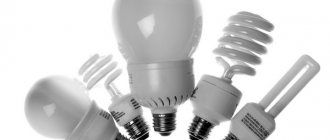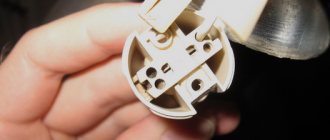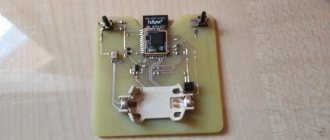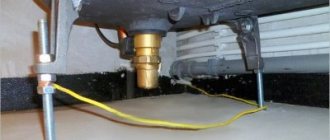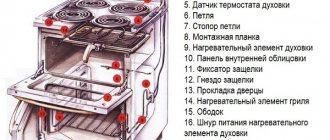Energy-saving lamps are becoming increasingly popular and are confidently replacing incandescent light bulbs. But these light sources are known to contain mercury, so they are potentially dangerous. The bulb of the lamp is filled with gaseous mercury, which glows under the influence of an electric charge. However, if it accidentally breaks, the person may be poisoned.
During operation of the lamp, since the toxic substance is not released outside. But sometimes it happens that when the device is replaced or transported, the integrity of the flask is damaged, and then toxic substances are released. Not all people know what to do if an energy-saving light bulb breaks. Such products are widely used for lighting residential premises, so everyone should know what to do if a mercury-containing lamp breaks.
General information
In modern society, energy-saving light bulbs have almost completely replaced conventional ones.
They are used everywhere - at home, in various industries, in offices. Without a doubt, energy-saving light bulbs have a number of advantages. But there is still one clear disadvantage - they break when dropped or hit. And this is very dangerous for the people around. Therefore, the question of what to do if an energy-saving light bulb breaks is very relevant for most users. Is this situation dangerous for others and what to do if an energy-saving lamp breaks, you can find out from this article.
Benefits of light bulbs
The advantages of these products are the following:
- Low energy consumption. Now the issue of payment for services is quite acute. Average rates for light are constantly increasing.
- Durability. Compared to incandescent lamps, energy-saving lamps last a long time.
- Low heat transfer. Melting of a chandelier or lamp is excluded.
- Rich light output. The bulbs emit light that is safe for the eyes.
- Lighting according to personal preference. You can choose warm yellow light or cool light with a light blue tint.
- Voltage fluctuations do not affect durability.
With so many advantages, products also have disadvantages. If broken, lamps pose a health hazard to people. The negative effect increases if several products are damaged.
How dangerous is this situation?
This situation cannot be called pleasant, but if a person breaks such a lamp, you should not panic or call specialists. True, this statement is relevant if this happened with one lamp. But if several of them crashed at once, this is already a serious reason to call for help. After all, inside such a device there is a mercury almagam , that is, mercury vapor. This substance is classified as hazard class 1. This substance is located inside the tube. Accordingly, it comes out when the tube breaks or its integrity is compromised.
Very often people confuse the mercury filling and the luminescent coating inside the glass tube. During operation, this coating may fall off inside the lamp. If this happens, there is no need to worry, because only after the integrity of the lamp is damaged, mercury evaporates from the lamp.
What are the dangers of mercury poisoning?
According to the classification catalog of waste, mercury is a harmful substance belonging to the first class of the most dangerous. It negatively affects the body even in small quantities. To do this, a person just needs to inhale its vapor. After a certain period of time, the tissues will begin to absorb mercury, and it is almost impossible to remove it.
Mercury poisoning has symptoms of standard toxic poisoning:
- severe abdominal pain;
- heat;
- inflammation of the gums and lungs;
- bloody diarrhea and nausea.
Mercury is especially dangerous for pregnant women. Poisoning causes memory loss, apathy and drowsiness. If these signs become apparent after collecting fragments of a fluorescent lamp, even with an insignificant mercury content in the flask, urgent hospitalization is necessary. After the examination, the doctor will prescribe medications to neutralize mercury in the body.
Why is mercury almagama dangerous?
Anyone who uses such lamps should understand what mercury is and why it is dangerous. Mercury is one of the elements in Mendeleev's periodic table. This metal is dangerous to health and life, as its fumes provoke poisoning. Its severity depends on how long and in what quantities a person inhaled such fumes.
When poisoned by mercury vapor, poisoning develops, in which a person experiences hand tremors, dysfunction of the nervous system, and gingivitis . Such manifestations are characteristic of chronic poisoning. In acute poisoning, when a person inhales high concentration vapors, weakness, abdominal pain, bleeding gums, and vomiting develop.
Symptoms of acute poisoning develop several hours after exposure to mercury. At first, a person feels weakness, headache, a metallic taste in the mouth and discomfort when swallowing. There is increased salivation, bleeding and swelling of the gums, nausea and vomiting. Then very severe pain in the abdomen develops, and severe diarrhea mixed with blood is tormented. The development of an inflammatory process in the lungs, severe chills, cough and shortness of breath . Body temperature may rise, sometimes reaching values close to 40°C. When conducting tests, a large amount of mercury is detected in the urine. In both adults and children, the symptoms of poisoning manifest themselves in the same way. However, in a baby, symptoms of poisoning develop faster, his clinical picture is more pronounced, so he needs to be helped as quickly as possible.
intoxication occurs , a person cannot lead a normal life. Mercury vapor is most dangerous for young children and expectant mothers. Provided that a pregnant woman is severely poisoned by mercury vapor, the likelihood of developing intrauterine pathologies in the fetus increases.
Severe poisoning ends in death within a few days. Consequently, acute poisoning is treated exclusively in a hospital setting. Therefore, it is important to know what will happen if such a lamp is broken, and how to act correctly in such a situation. Of course, if one light bulb breaks, it will not cause much harm to others. But it is still important to take all necessary precautions.
Symptoms of poisoning
If you follow safety rules, the danger from mercury vapor is minimal. But sometimes the consequences are invisible. This may be detected several hours or days later.
Symptoms of poisoning include the following:
- Fatigue and headache quickly appear. With a strong concentration of the substance, trembling of the fingers and convulsions appear.
- Disturbances in the digestive system - frequent vomiting, abdominal cramps.
- The occurrence of non-infectious bronchitis.
Another problem is the long-term removal of mercury from the body. With constant evaporation, it accumulates. Therefore, if even some of the above symptoms occur, you should immediately consult a doctor.
How much mercury is in an energy-saving lamp?
Depending on the characteristics of the energy-saving lamp, it may contain from 1 to 400 mg of mercury. If we compare it with a thermometer, then the amount of this metal in it is much greater - 2 g. A health threat is observed if the concentration of mercury vapor in the room is from 0.25 mg/cu.
Light bulbs that are produced in our country or in China contain mercury vapor, but devices from manufacturers from European countries contain mercury almagama (an alloy with another metal). It is less dangerous to health.
Considering the fact that in fact the danger of a broken energy-saving lamp is mostly exaggerated, you should not be scared or panic. However, everyone should be clearly aware that such light bulbs must be treated very carefully. This should be clearly explained to children.
The question of what is more dangerous is also quite relevant - if the thermometer breaks, or if the integrity of the lamp is lost. Despite the abundance of safe thermometers, mercury thermometers are still used in many families. It is a broken thermometer that is more dangerous, since small balls of mercury can roll into a variety of places and remain in crevices that are inaccessible for cleaning. If left indoors, mercury will poison the air for a long time. But if the integrity of an energy-saving lamp is damaged, there is no need to look for balls on the floor, since the mercury inside is only in the form of vapor. That is why the harm of energy-saving lamps in this case is less pronounced.
How to determine that there is no mercury
If you doubt that some of the mercury droplets could not be removed from the room, you should call specialists for laboratory measurements. The demercurization service examines the air in the contaminated room and determines where the mercury could be. Experts will provide recommendations on how to protect your premises from hazardous metals.
Such measurements become necessary if fragments fell on furniture and carpets. Due to the porous surface of products, particles of mercury droplets are difficult to remove. If a laboratory analysis reveals an increased level of air pollution, then you need to make a decision - throw these things away or expose your health to danger.
What to do if a light bulb bursts or breaks?
If a fluorescent lamp breaks, what to do depends on the circumstances in which this happened.
If such an incident occurs, you need to act by adhering to the following sequence of rules:
- Take children and animals out of the room where this happened and immediately close the door.
- It is important to be careful not to cut yourself on the fragments.
- If a light bulb breaks directly in the lamp, you should immediately disconnect it from the power supply.
- Open a window in the room, while closing all windows and doors in other rooms to avoid drafts. This is the most important step to clear the air of harmful mercury vapor as quickly as possible. Ventilation should continue for as long as possible, at least two hours. But ideally, the room should be ventilated throughout the day.
- You need to pour cold water into a large jar and add potassium permanganate there.
- Wear plastic or rubber gloves on your hands; if you don’t have these, use plastic bags. Under no circumstances should you pick up the fragments with your bare hands.
- Collect all the pieces of the light bulb, including the base, in a jar of liquid.
- Small particles of glass and luminescent coating should be collected using a wet rag, napkin or cotton wool, carefully and thoroughly blotting the surface where the device crashed. A cotton wool or napkin should also be placed in the water in a jar. You can also use tape to pick up small pieces.
- After completing all the work, close the jar with a lid and place it in a dark room where there are no people. Then you need to contact the Ministry of Emergency Situations, where they will tell you where you can take this waste.
- After this, you should look very carefully to see if there are any small pieces left under the furniture in the cracks and other places.
- The floor should be thoroughly washed with water and a detergent containing chlorine or water with soap and soda. You can also use a solution of potassium permanganate or iodine solution - 100 ml of iodine per 1 liter of water. Wet cleaning using these products should be carried out for several days in a row.
- After this, take a shower.
- Shoes and clothes that the person was wearing during cleaning do not need to be disposed of. All this must be washed thoroughly in a basin separately from other clothes.
Is it dangerous if a lamp breaks on a carpeted floor?
If everything happened exactly like this, then the main danger is the likely presence of small particles of glass in the carpet pile. As already indicated, all the pieces need to be assembled very carefully. Next, you should roll up the carpet and take it to a place where there is no one - in a vacant lot or in a field. It needs to be knocked out or shaken out very carefully. If possible, it is advisable to leave the carpet to air out in the open air for 24 hours.
Hazard Control Measures
To minimize the consequences of the spread of mercury after a broken energy-saving light bulb, a number of measures must be taken:
- The process of collecting fragmented parts from the lamp, ventilation, etc. should be carried out by one person, everyone else should leave the room, taking their pets with them.
- To prevent fumes from spreading throughout the living area, the door to the room is tightly closed, and the cracks are plugged with rags.
- Open the windows in the room.
- Start collecting shrapnel parts, using protective equipment (rubber gloves). Small parts are removed with a sponge, which is thrown away along with the fragments. The vacuum cleaner is not used for cleaning, as mercury vapor will remain on the filters.
- Shards, washcloths, rags, cardboard, newspapers are all thrown away in a tight bag.
- All surfaces are wiped with a damp cloth, which is also immediately disposed of. If the fragments were on soft surfaces (blankets, pillows), then they must be examined to determine whether they contain hazardous substances.
- If dangerous particles get on the carpet, it should be taken outside and knocked out. An old sheet or oilcloth is spread under it, which will serve as a collection of elements. It will also have to be disposed of along with the collected parts.
- All items collected in the package must be disposed of in a special container.
- After complete removal of particles, demercurization is carried out. This is the treatment of all surfaces with a special solution, which can reduce the concentration of vapors. It is permissible to prepare the solution yourself. Preparation in three ways is possible: 2 grams of manganese are dissolved in a liter of water; for 10 liters add 400 grams of soda and part of liquid soap; Dissolve 100 ml of iodine in a liter of water.
- This procedure takes 3–4 days.
- In order not to carry out cleaning activities themselves, special services are invited to carry out treatment with special solutions and measure the level of concentration of mercury vapor.
What should you not do?
There are a number of prohibitions that also need to be taken into account. So, you can't do the following:
- collect the light bulb particles with a vacuum cleaner, otherwise the mercury will end up inside and settle there;
- turn on the air conditioner, as mercury vapor will settle inside it;
- use a broom or broom, as too strong movements will cause particles to scatter throughout the room;
- throw glass particles or a jar of waste into the garbage chute or take it to the trash;
- pour liquid from a jar containing the remains of a broken lamp down the drain.
Used whole light bulbs should not be thrown into the trash. They are handed over to collection points. Information on where to donate energy-saving lamps can sometimes be found in stores specializing in the sale of such devices. Sometimes used lamps can be handed over to points in these stores. If this is not possible, you can find out where to donate energy-saving light bulbs and where to dispose of leftovers if the lamp breaks by calling emergency rescue organizations.
Thermal demercurization
The procedure involves crushing the lamps by heating the cullet until the mercury becomes vaporized. Vapors are also condensed and purified. Metal parts of lamps are divided into concentrates for non-ferrous metallurgy:
- aluminum;
- copper-nickel;
- copper-zinc;
- solder;
- lead.
Crushed glass is disposed of in household waste. It can also be added as a filler to concrete if there are no mercury residues in it.
All of these methods may not provide purification of solid fractions to MPC standards. In addition, wastewater appears, which always contains some mercury and other harmful substances. Modern methods include lamp recycling. It is performed on special modules where there are no sewage drains, and the remaining mercury vapor is captured and processed in an absorption column. As a result, harmful emissions into nature are eliminated, and there are no toxic chemical components in solid waste.
conclusions
Even considering how much an energy-saving light bulb costs, these devices are very economical and convenient. But both the remains of broken and used devices must be disposed of correctly so as not to cause damage to the environment. If trouble occurs, you should not panic, but act according to the rules, which describe in detail what to do if a fluorescent lamp breaks.
According to statistics, approximately 70 million of these lamps fail every year. And only about 40% is recycled taking into account all the rules of this process. All the rest end up in household waste and poison the environment. Therefore, disposal issues must be treated very responsibly.
Disposal nuances
With the beginning of mass production of energy-saving fluorescent lamps, the problem of their disposal is acute throughout the world. Russia is following a well-trodden path in this matter: it bans the production of high-power incandescent lamps and gives the “green light” to the so-called housekeepers, which, with the help of advertising campaigns, quickly gained popularity and won the trust of the population.
But the authorities tried not to directly declare the danger. Why? Because recycling worn-out mercury-containing lamps is a very expensive process for any country. Even in economically developed Western Europe, organizational arrangements for receiving burnt-out fluorescent lamps remained at a low level. People continue to massively throw them away with regular waste, without thinking about the consequences.
In Russia and the CIS countries, information about the dangers and methods of proper disposal is much worse. Many people only know that the glass bulb of an energy-saving lamp cannot be broken. Few people have any idea about the amount of harmful substances under glass and their effect on the body. Someone with a broken “housekeeper” treats it like an ordinary light bulb, while others simply deliberately throw it into a container with household waste.
It is surprising that even many people who know about the presence of toxic vapors inside the light bulb are negligent in disposing of the damaged bulb in their home. The reasoning in such cases is simple: industrial enterprises, exhaust gases and poor-quality water cause much more harm to the body every day. Therefore, a broken mercury lamp is not so dangerous and has much less weight among other harmful factors.
Why is an energy-saving light bulb harmful?
Due to the fact that the gaseous environment of a fluorescent lamp contains a certain amount of mercury vapor, as a result of which there is a danger of poisoning. Long-term human contact with mercury vapor and its chemical compounds ends in death, but it should also be understood that even short-term contact can cause poisoning and even a neurological disease - mercurialism.
Ultraviolet radiation comes out through the glass bulb of a fluorescent lamp, which can be dangerous for people with sensitive skin. Its danger lies in its effect on the eyes, damaging the retina and cornea.
The harm from energy-saving light bulbs lies in the danger of poisoning with mercury vapor and exposure to ultraviolet radiation on the cornea and retina.
Advantages and disadvantages of mercury lamps
Some experts call mercury light sources technically obsolete and recommend reducing their use not only for domestic but also for industrial purposes.
However, such an opinion is somewhat premature and it is too early to write off gas-discharge lamps. After all, there are places where they perform at the highest level and provide bright, high-quality light with reasonable consumption.
Advantages of gas-discharge modules
Mercury-containing light sources have specific positive qualities that are quite rare in other lamp products.
Among them are such positions as:
- high and effective light output throughout the entire operational period - from 30 to 60 Lm per 1 Watt;
- a wide range of powers on classic types of E27/E40 sockets - from 50 W to 1000 W depending on the model;
- extended service life in a wide ambient temperature range - up to 12,000-20,000 hours;
- good frost resistance and correct operation even at low thermometer readings;
- the ability to use light sources without connecting ballasts – relevant for tungsten-mercury devices;
- compact dimensions and good body strength.
High-pressure devices demonstrate maximum efficiency in street lighting systems. They perform well in illuminating large indoor and outdoor areas.
Design and principle of a luminescent light source
An arc lamp consists of a sealed glass bulb, a high-frequency transducer and a base. The high-frequency converter is made on the basis of an electronic board. The flask is filled with gas, which includes mercury vapor. At the ends of the bulb there are filaments.
The device of a compact fluorescent light bulb
When the lamp is connected to the electrical circuit, a discharge occurs in the bulb. In this case, electromagnetic waves in the ultraviolet range are emitted. To convert ultraviolet radiation into visible light, a phosphor is applied inside the bulb.
Thus, according to their operating principle, fluorescent lamps belong to the gas-discharge type of radiation sources.
They can be performed in two versions:
- compact;
- linear.
A linear arc lamp is a traditional fluorescent lamp whose bulb is shaped like a cylinder.
Linear energy saving light bulb
The compact version is designed in exactly the same way as the linear one, but the bulb has a curved appearance, which allows it to be made in smaller sizes with the same electrical parameters.
Compact energy efficient light bulb
Since energy-saving lamps contain mercury vapor inside, it is necessary to handle such lighting fixtures carefully.
If the glass bulb of the lamp is intact, then the mercury contained inside it does not pose any danger to humans.
Even if the bulb falls off the base, but its seal is not broken, the mercury in it cannot enter the air and such a lamp also remains safe.
However, if the arc lamp was nevertheless broken, then in this case the contents inside the energy-saving lamp enter the surrounding air and may pose a danger to people in the room.
Broken ESL
This is interesting: Choosing ceiling chandeliers with a fan - consider them in detail
